2016 was a bumper year for Indian aviation. The country missed the 100 million (10 crore) passenger mark by a whisker, coming in a 99.88 million. The growth though appears at the cost of yields and Indian carriers can absorb this as long as oil prices remain at their low levels.
2016 also saw the birth of Air Carnival and the suspension of Air Pegasus, both regional carriers in the south of India.
The infographics below detail the domestic performance of the Indian airlines over 2016.
Traffic doubled
India has doubled its passenger air traffic at a consistent pace. From 23 million passengers in 2005, traffic more than doubled to 51 million in 2010, which has in turn almost doubled in 2016.
However, the lack of planning, so typical of India, is now beginning to show. Airports across the country and chock-a-block full. Mumbai airport is the best example. The city has one highly constrained airport. The government is unable to attract any meaningful bids for the new airport due to flip-flops, missed deadlines, incomplete promises, etc.
Long over-taken by New Delhi for passenger number, Mumbai now has lost its crown of the economic capital of India to the national capital. New Delhi airport has three runways, and while fog plays havoc in the winters, the airport is able to cater to the increased demand, and is hub to no less than four major domestic airlines.
Overall
- Total number of domestic passengers carried annually has increased 23% from 81 million in 2015 to 99.88 million passengers in 2016.
- Passengers carried in December 2016 increased 23.7% from 7.7 million to 9.5 million.
- Smaller carriers are holding steady in their month on month passengers but are not showing any expansion.
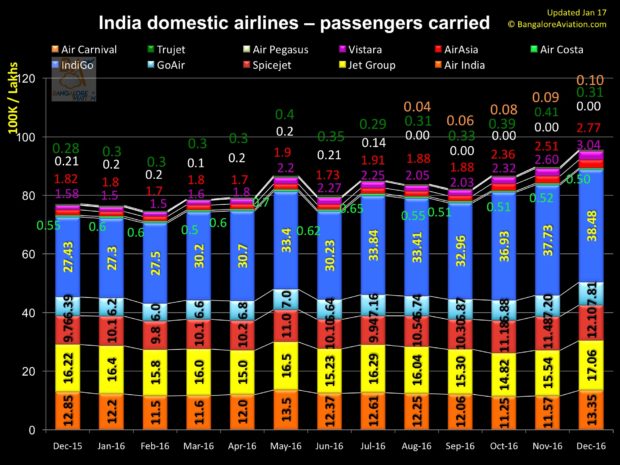
Market share
- IndiGo grew its market share and remained the market leader. It also has the largest fleet in the domestic market.
- Spicejet maintained market share despite have the best on-time performance consistently.
- Go Air too maintained its market share.
- Legacy full service carriers Jet Airways and Air India lost market share
- Market newcomers (relatively speaking) AirAsia India and Tata-SIA Vistara grew share along with their networks
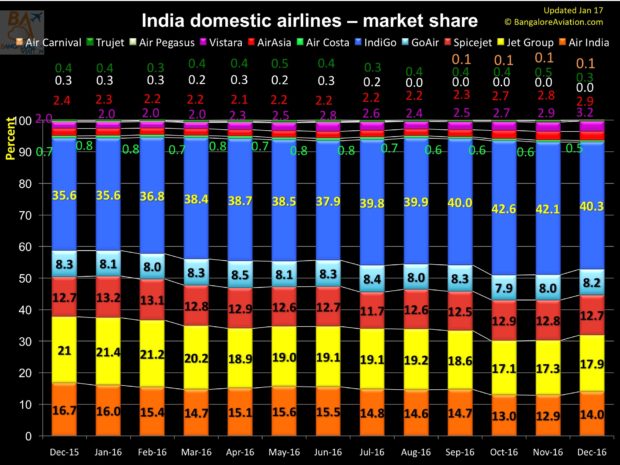
Load Factors
All carriers have been seeing steady load factors between 70-85% through the year. The highest load factors through the year were of Spicejet with Indigo and Go Air following. Vistara has been seeing some of the lowest load factors, though the carrier showed improvement towards the end of the year.
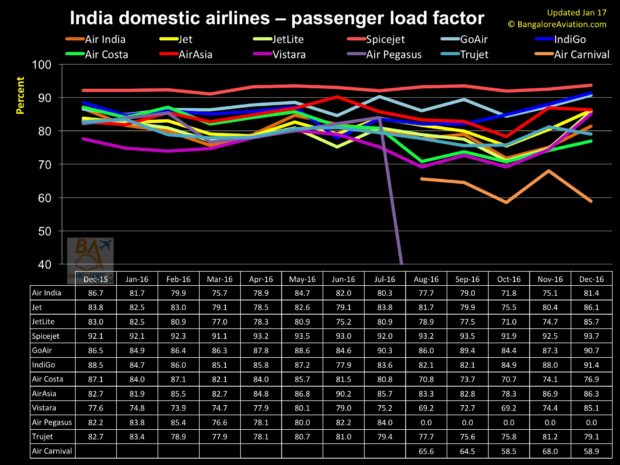
On Time Performance
As always, the end of the year brings havoc to airline schedules with fog affecting the major airports of New Delhi and Bangalore. This year, the congestion at all leading airports also put a downward pressure on the performance of all airlines.
However through the year, the Tata-SIA Vistara led the market along with Spicejet consistently scoring over 80%. Indigo which was reporting good OTP figures till September has fallen into a slump and in December 2016 came second from last to consistent laggard and national carrier, Air India.
On-time performance has been a key benchmark of IndiGo and this has caused a war of words and pitched advertisement battles between the airlines. Now the government too has joined the fray investigating the validity of the data.
All key point to note, is that data is collected only from the four major private airports, New Delhi, Mumbai, Bengalooru, and Hyderabad. None of the government controlled Airports Authority of India (AAI) seem to report data.
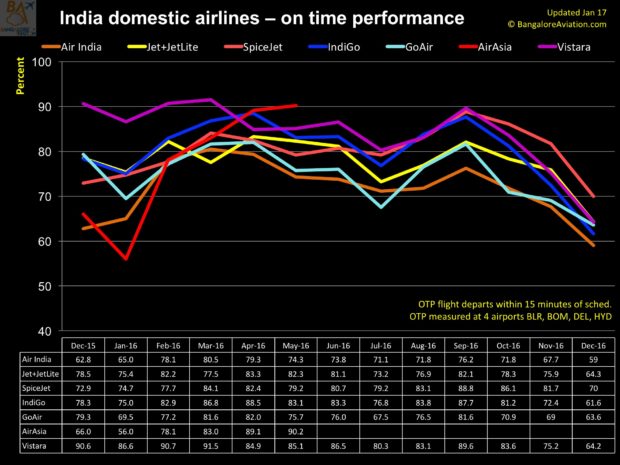
Cancellations
The flight cancellation chart shows some very erratic performance from the new players with Trujet and Air Carnival posting the highest cancellation rates of the year. Air Costa’s performance fluctuates from month to month between good and bad, but is trending towards overall improvement.
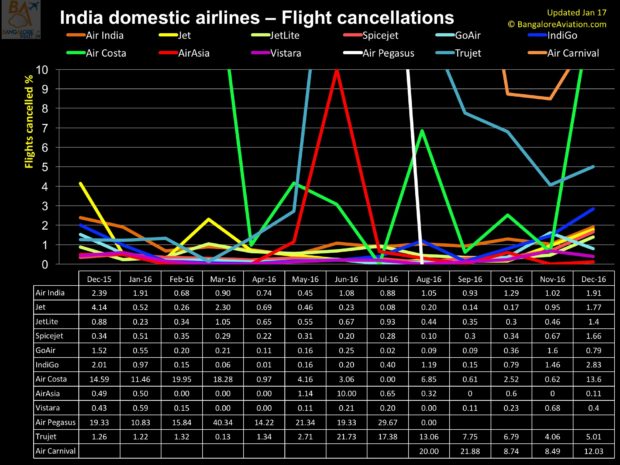
Passenger Complaints
Air India leads the complaints score consistently. Is this a reflection of the passenger who flies the national carrier with irrational expectations, or is this genuinely a case of an airline unable to improve? That is a question the senior management of Air India, do not seem to answer.
The Tata-SIA joint venture, Vistara, leads the field with the lowest complaints, expectedly given the strong reputation of Singapore Airlines in passenger service.
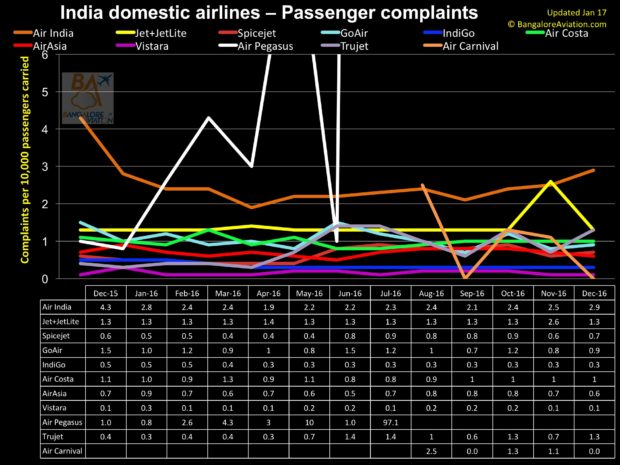
 Bangalore Aviation News, Reviews, Analysis and opinions of Indian Aviation
Bangalore Aviation News, Reviews, Analysis and opinions of Indian Aviation




One comment
Pingback: Snapshot: India Aviation Industry – FinSummary